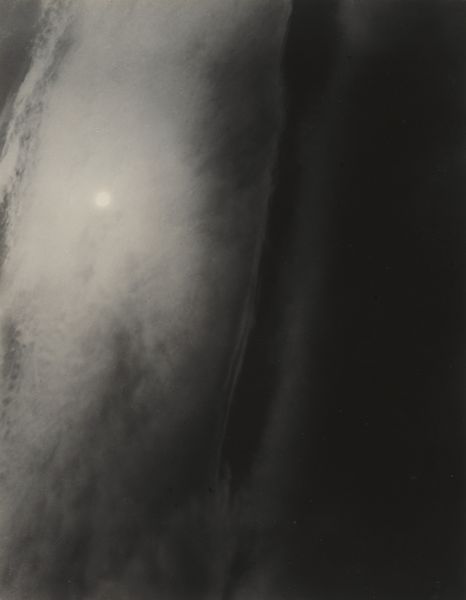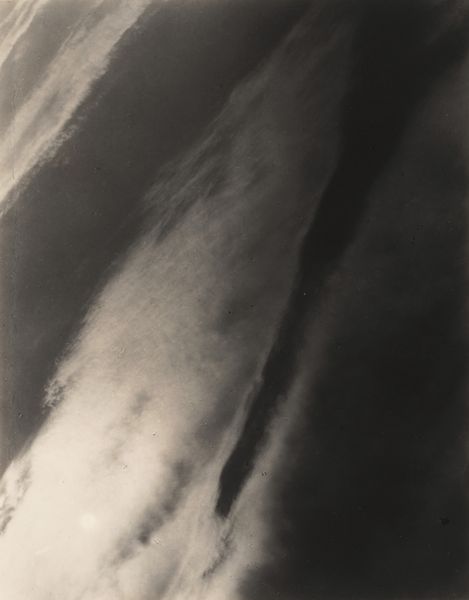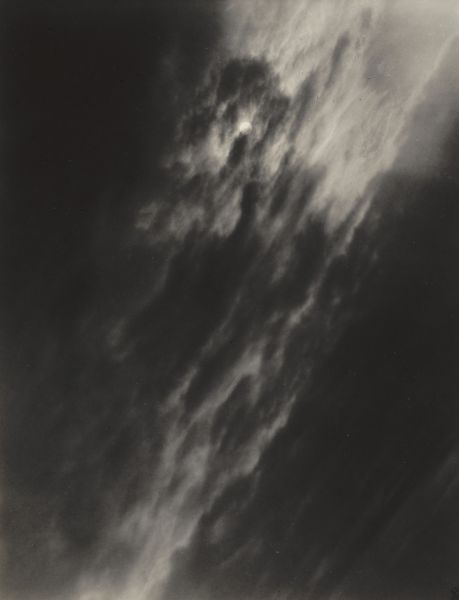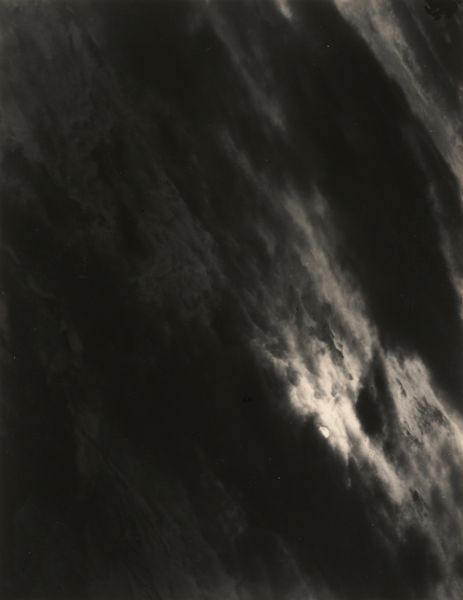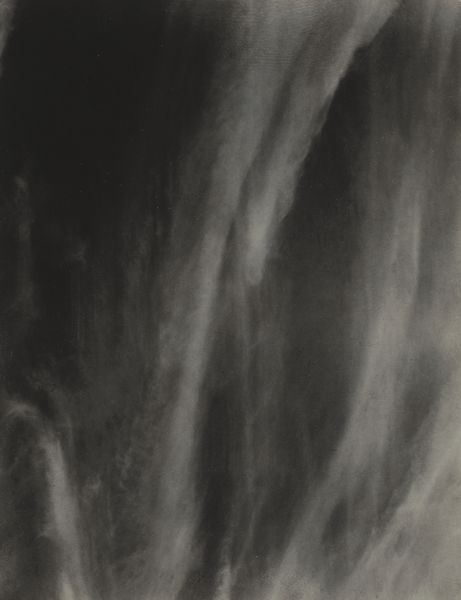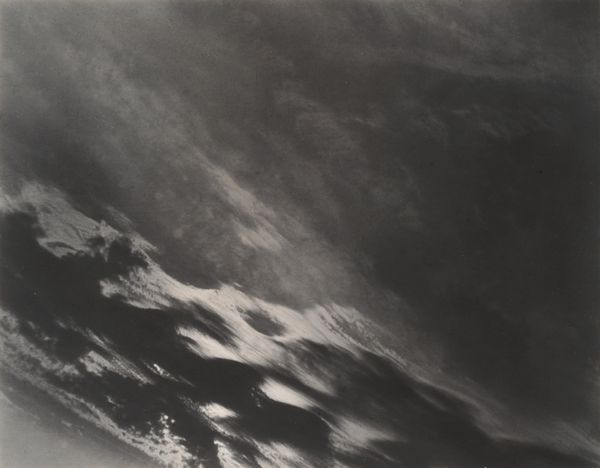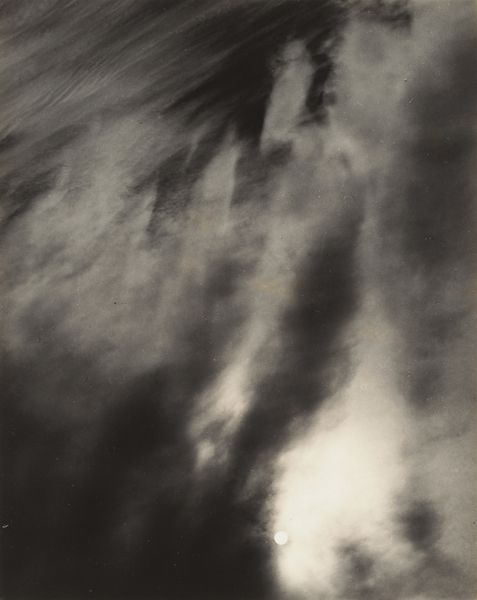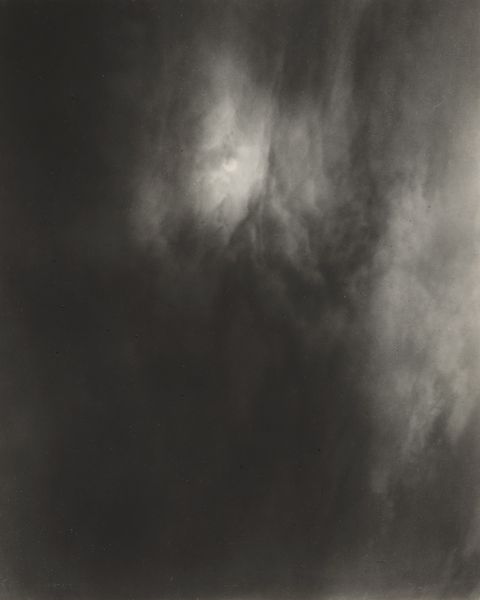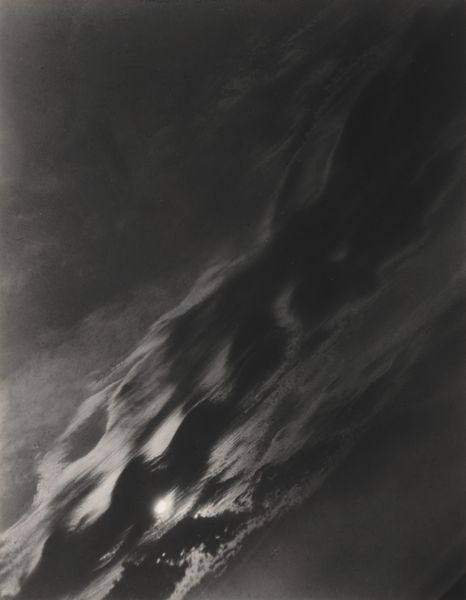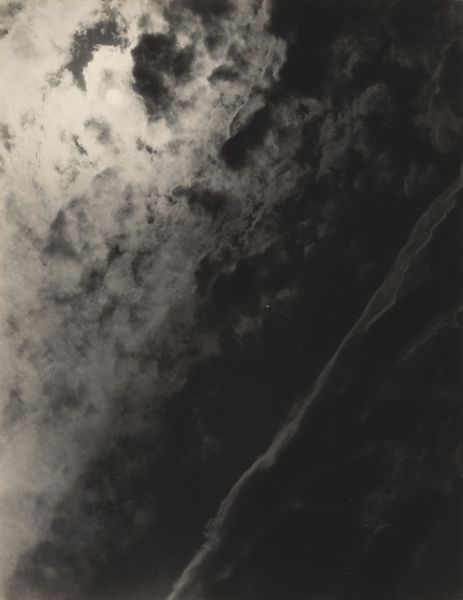
Dimensions: sheet (trimmed to image): 11.8 x 9.2 cm (4 5/8 x 3 5/8 in.) mount: 34.9 x 27.5 cm (13 3/4 x 10 13/16 in.)
Copyright: National Gallery of Art: CC0 1.0
Editor: Here we have Alfred Stieglitz’s "Equivalent," a gelatin silver print from 1931. It looks like a sky filled with clouds, but it's also very abstract. The stark contrast between light and shadow gives it an almost ominous feel. What do you make of it? Curator: The title "Equivalent" is indeed key. Stieglitz aimed to capture emotional states, not just literal depictions. Observe how the composition avoids traditional landscape conventions. The sky isn't a backdrop; it’s the subject. The forms of the clouds become visual metaphors. Do you notice how the tonality shapes the forms? Editor: Yes, the grayscale really emphasizes the textures and the interplay between light and dark. The composition avoids a clear horizon line. Does that enhance the abstraction? Curator: Precisely. By denying us a clear sense of space, Stieglitz forces us to focus on the formal qualities—the arrangement of shapes, the gradations of tone, and the overall balance of the image. One might describe the aesthetic language that appears to be based on line. He encourages viewers to find an 'equivalent' within themselves. How do you understand Stieglitz’s process here? Editor: So, instead of seeing clouds, we’re meant to feel something. It’s less about representation and more about… expression. That makes sense, given the rise of abstract expressionism at the time. I hadn't considered it quite that way. Curator: And how insightful. By stripping away representational elements, Stieglitz foregrounds the inherent qualities of photography as a medium, a play of light, and form to invite a subjective response. Editor: I'll definitely think differently about photography as a medium now. Thanks for pointing out all those details! Curator: Indeed, consider the photograph not merely as a window, but as a mirror.
Comments
No comments
Be the first to comment and join the conversation on the ultimate creative platform.
